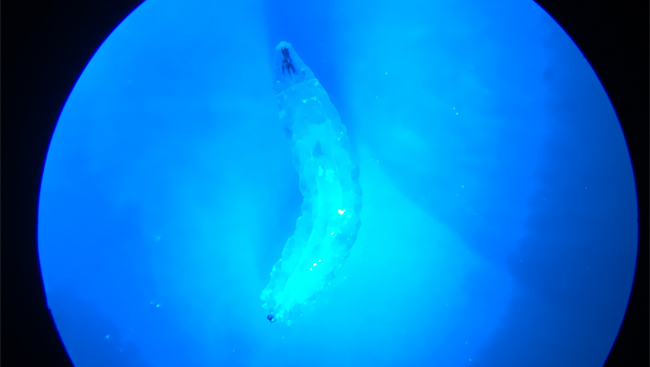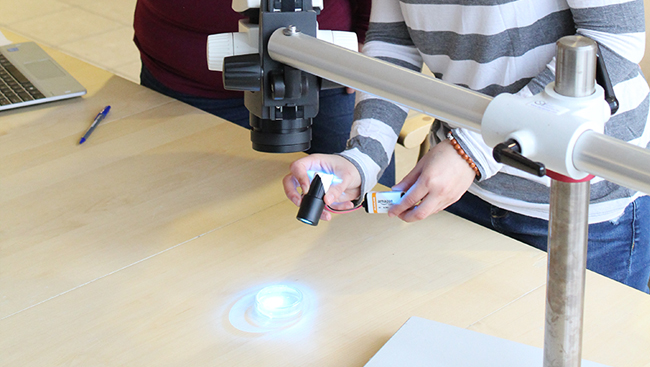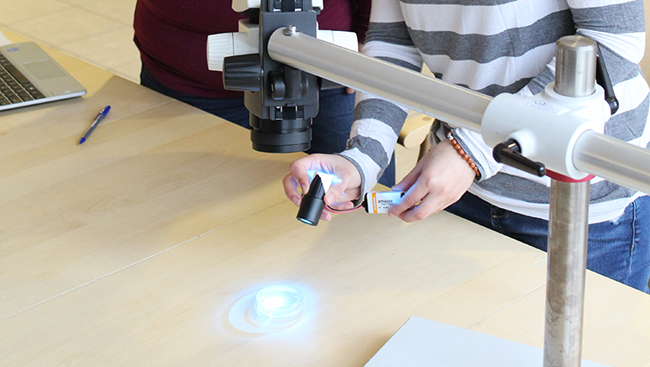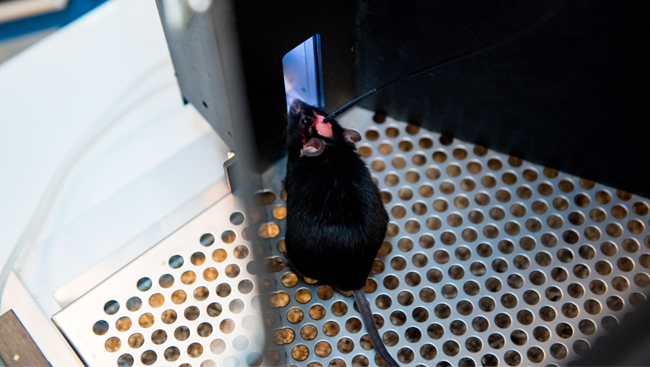Module 5: Implementing Optogenetics in the Classroom
- Featured in:
- SfN’s Optogenetics Training Series
Learn how to bring optogenetics into undergraduate teaching labs using Drosophila or C. elegans models. You will get ideas from the demonstration video, lists of resources, and first-hand case studies prepared by Heather Rhodes, associate professor in the department of biology and director of the neuroscience program at Denison University.
 Heather Rhodes |
After reviewing the materials in Module 5, you should be able to:
- Access readily available C. elegans or Drosophila lines to demonstrate optogenetics in the classroom.
- Understand how to assemble simple, low-cost equipment to conduct these experiments.
- Use provided resources to run hands-on, inquiry-based student experiments.
Visit the Community forum for all eight modules to share your insights and best practices, ask questions, and engage with other training series’ participants.
Complete this short survey to provide valuable feedback about Module 5 to SfN and the series faculty.
-
 Module 5A: Using Optogenetics With C. elegans for Inquiry-Based Student Experiments
Module 5A: Using Optogenetics With C. elegans for Inquiry-Based Student ExperimentsIn this video, Heather Rhodes and her undergraduate students will demonstrate how to set up, conduct, and interpret results from an inquiry-based laboratory exercise using optogenetics in C. elegans. Specifically, Rhodes will:
- Explain how to assemble simple, low-cost equipment to run an inquiry-based optogenetics experiment with undergraduate students.
- Demonstrate optogenetics stimulation to manipulate motor behavior in C. elegans with her students.
After watching this video, you should be able to better understand how to integrate optogenetic approaches into laboratory exercises for undergraduate and high school students.
-
 Module 5B: Implementing Optogenetics in the Classroom Part One — Drosophila
Module 5B: Implementing Optogenetics in the Classroom Part One — DrosophilaOptogenetics is such an important and exciting tool in neuroscience research that I decided to add it to my undergraduate courses at Denison University, the liberal arts college where I teach.
Although I’d never used optogenetics as part of my own research, I’ve now successfully added a Drosophila optogenetics lab to one of my courses with low costs, reasonable preparation, and meaningful impact.
Students benefited from a hands on experience with in vivo optogenetics, and they even designed their own experiments.
In this article, and Implementing Optogenetics in the Classroom Part Two: C. elegans, I share my advice for adopting optogenetics approaches for teaching purposes.
-
 Module 5C: Implementing Optogenetics in the Classroom Part Two — C. elegans
Module 5C: Implementing Optogenetics in the Classroom Part Two — C. elegansAfter the success I had using optogenetics with Drosophila in my undergraduate neurophysiology class last year (read, Implementing Optogenetics in the Classroom Part One: Drosophila), I decided to try working with another species — C. elegans — to conduct an optogenetics activity in my neuroscience senior seminar class this year.









